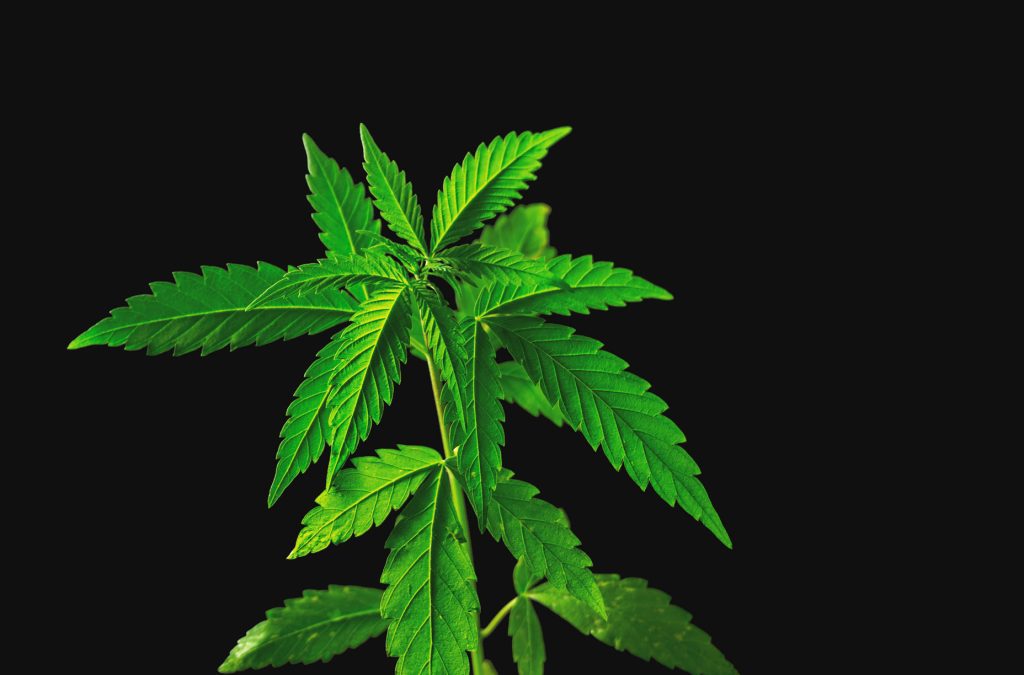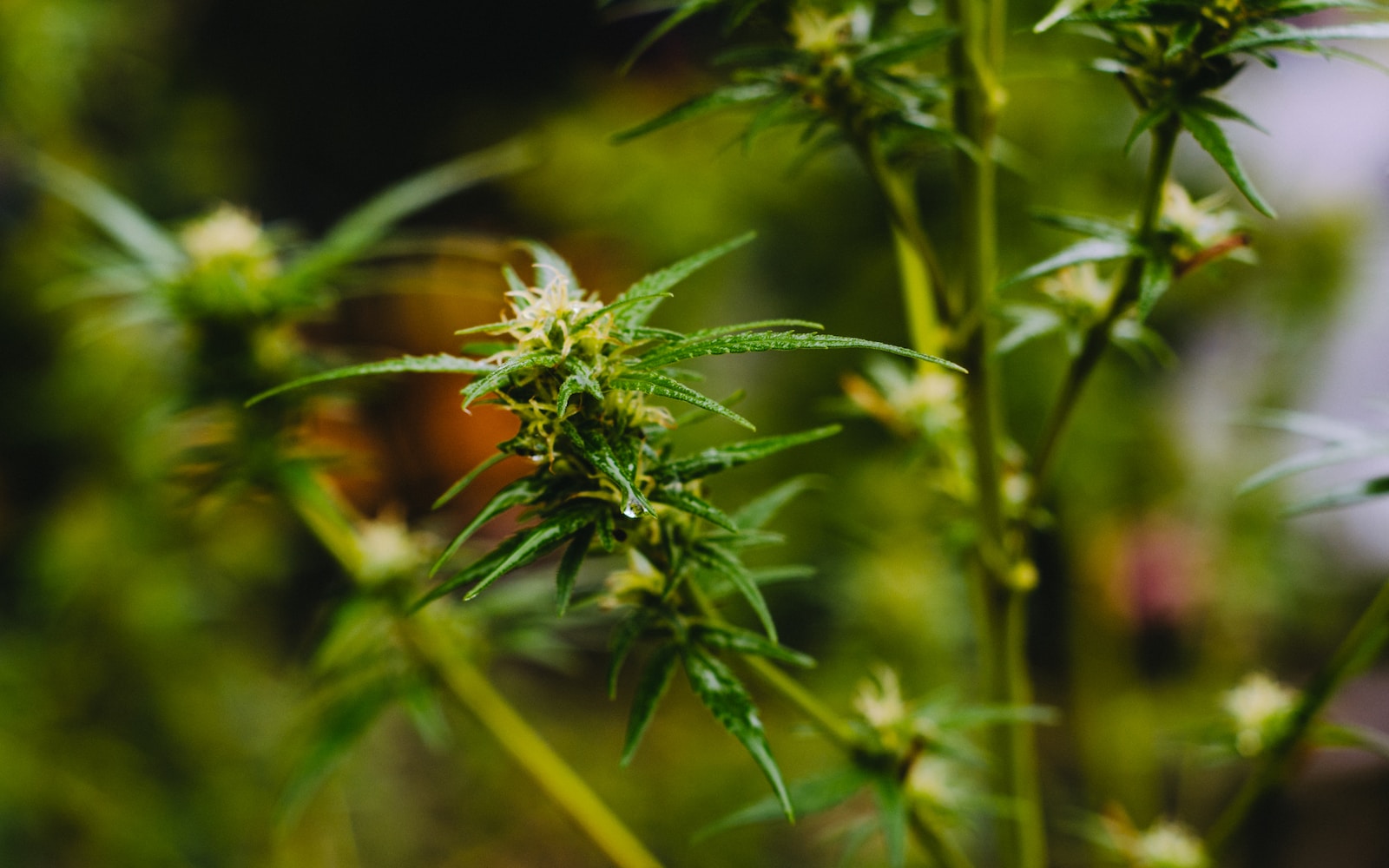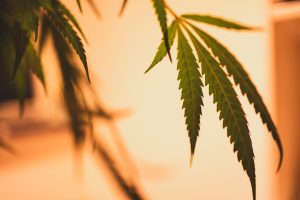Welcome to Cannabis 103
Deep Dive into Cannabis Chemical Compounds — Delve into the details of cannabinoids and other chemical compounds in cannabis, and learn about the various routes of administration for medical cannabis.
Emerging research underscores the complexity behind the effects of cannabis strains, revealing it to be more than just the influence of THC levels. This ‘Deep Dive into Cannabis Chemical Compounds’ course explores the myriad chemical compounds contributing to cannabis’ impact, and outlines various methods for administering medical cannabis. This course is crafted to deliver understandable insights, enabling you to select the most effective cannabis products tailored to your unique needs.

Unpacking Terpenes: What are They?
 Cannabis is a multi-faceted plant, home to hundreds of chemical compounds. Ongoing research continues to shed light on the varied benefits these compounds offer.
Cannabis is a multi-faceted plant, home to hundreds of chemical compounds. Ongoing research continues to shed light on the varied benefits these compounds offer.
You may already be familiar with cannabinoids, such as THC and CBD, which are the most common. These are not the only influential compounds in cannabis, though. Terpenes, another type of compound, also have the potential to modify the effects of cannabis.
Terpenes are predominantly volatile, aromatic oils that are the most widespread plant-based chemicals found in nature. They’re the source of the unique fragrances we associate with different plants. Many terpenes serve protective roles for plants by warding off herbivores. The primary components of essential oils are terpenes.
So, what role do terpenes play in cannabis?
Terpenes in cannabis are produced in the plant’s trichomes, the same glands that create cannabinoids. They’re the culprits behind the distinct, sometimes potent, aromas of different cannabis strains. Not only do they provide unique smells, but they also have potential therapeutic benefits. Varieties of cannabis with similar cannabinoid profiles can exhibit vastly different psychoactive and therapeutic effects, likely due to variations in their terpene content. While aromatherapists, perfumers, and herbalists are quite familiar with terpenes and essential oils, it’s only recently that cannabis researchers have begun to examine their medicinal properties.
As of the latest research, more than 100 unique terpenes have been identified in the cannabis plant. Each of these terpenes imparts a distinctive scent and sensory experience. As the science advances, we’re learning more and more about how these terpenes interact with our bodies and how they enhance the effects of other cannabis compounds.
Citations:
- Russo, E. B. (2011). Taming THC: potential cannabis synergy and phytocannabinoid-terpenoid entourage effects. British Journal of Pharmacology, 163(7), 1344–1364. https://doi.org/10.1111/j.1476-5381.2011.01238.x
- Booth, J. K., & Bohlmann, J. (2019). Terpenes in Cannabis sativa – From plant genome to humans. Plant Science, 284, 67–72. https://doi.org/10.1016/j.plantsci.2019.03.022
Common Terpenes: Which Ones are Most Prevalent?
Let’s take a brief look at some of the most prevalent cannabis terpenes:
- Alpha-Pinene: This is the most abundant terpene in the plant kingdom, contributing to the fresh, pine-like aroma of coniferous trees and also present in herbs like rosemary and basil. Frequently found in cannabis, it’s a bronchodilator that has been used in asthma treatments. It encourages alertness, has anti-inflammatory properties, and aids in short-term memory retention.
- Beta-caryophyllene: This terpene also doubles as a dietary cannabinoid due to its interaction with receptors in the endocannabinoid system. It’s commonly found in black pepper, oregano, leafy green vegetables, and various edible herbs, along with cannabis. Beta-caryophyllene gives off a spicy, woody, and peppery aroma and has potent anti-inflammatory properties, both internal and external.
- Humulene: This terpene, found in hops, Vietnamese coriander, and cannabis, exhibits anti-tumor and anti-inflammatory properties and is an appetite suppressant.
- Limonene: Abundant in citrus fruits, peppermint, and rosemary as well as cannabis, Limonene is the principal ingredient in citrus cleaners. It’s associated with strains of cannabis that produce a quick onset of effects and might be effective in treating gastric reflux. Limonene also has strong antimicrobial properties.
- Linalool: Commonly found in lavender, rosewood, birch, and many other plants, Linalool exudes a floral aroma with a slight candy-like hint. It has sedative, analgesic, anti-convulsant, and anti-epileptic properties, making it beneficial in managing stress.
- Myrcene: This terpene is present in mangoes, hops, lemongrass, and cannabis, offering an earthy, herbal, and occasionally fruity aroma. Known for its sedative properties, Myrcene amplifies the effects of other sedative medications and relaxes muscles. It can help with conditions like insomnia, inflammation, muscle tension, and pain. It is more prevalent in indica strains than sativa strains, though most strains contain some amount of Myrcene.
Citations:
- Fischedick J. (2015). Cannabinoids and Terpenes as Chemotaxonomic Markers in Cannabis. Natural Products Chemistry & Research, [online] 03(04). Available at: https://www.researchgate.net/publication/281006045_Cannabinoids_and_Terpenes_as_Chemotaxonomic_Markers_in_Cannabis [Accessed 28 Oct. 2017].
- Russo, E. B. (2011). Taming THC: potential cannabis synergy and phytocannabinoid-terpenoid entourage effects. British Journal of Pharmacology, 163(7), 1344–1364. https://doi.org/10.1111/j.1476-5381.2011.01238.x
- Booth, J. K., & Bohlmann, J. (2019). Terpenes in Cannabis sativa – From plant genome to humans. Plant Science, 284, 67–72. https://doi.org/10.1016/j.plantsci.2019.03.022
Exploring CBG: What is It?
Cannabigerol, more commonly known as CBG, is a non-psychoactive and non-intoxicating cannabinoid. Often referred to as the “parent” of other cannabinoids, CBG acts as a precursor to the other cannabinoids, being synthesized and transformed within the cannabis plant itself.
There has been increasing interest in the medical potential of CBG. Studies suggest that it might be useful for managing various health conditions. These include the treatment of pain, skin disorders, and inflammatory bowel disease, amongst other ailments.
- Pain Management: Research suggests that CBG might have potential applications in the management of pain. This could potentially provide a non-addictive and less harmful alternative to traditional painkillers, especially in the treatment of chronic pain conditions.
- Skin Conditions: CBG has also been studied for its potential effectiveness in treating dry and seborrhoeic skin as well as acne. The anti-inflammatory properties of CBG can potentially help to alleviate the symptoms of these conditions.
- Inflammatory Bowel Disease: Research has shown that CBG may have beneficial effects on experimental inflammatory bowel disease. It is thought to do this by reducing inflammation in the bowel, potentially providing relief for those with this condition.
Despite these promising results, it is crucial to note that much of the research is still in its early stages and more studies are needed to fully understand CBG’s potential therapeutic effects.
Citations:
- Russo, E. (2011). Taming THC: potential cannabis synergy and phytocannabinoid-terpenoid entourage effects. British Journal of Pharmacology, [online] 163(7), pp.1344-1364. Available at: https://www.ncbi.nlm.nih.gov/pmc/articles/PMC3165946.
- Oláh, A., Markovics, A., Szabó-Papp, J., Szabó, P., Stott, C., Zouboulis, C., and Bíró, T. (2016). Differential effectiveness of selected non-psychotropic phytocannabinoids on human sebocyte functions implicates their introduction in dry/seborrhoeic skin and acne treatment. Experimental Dermatology, [online] 25(9), pp.701-707. Available at: https://www.ncbi.nlm.nih.gov/pubmed/27094344.
- Borrelli, F., Fasolino, I., Romano, B., Capasso, R., Maiello, F., Coppola, D., Orlando, P., Battista, G., Pagano, E., Di Marzo, V., and Izzo, A. (2013). Beneficial effect of the non-psychotropic plant cannabinoid cannabigerol on experimental inflammatory bowel disease. Biochemical Pharmacology, 85(9), pp.1306-1316.
- Cascio, M. G., and Pertwee, R. G. (2014). Known Pharmacological Actions of Delta-9-Tetrahydrocannabinol and of Four Other Chemical Constituents of Cannabis that Activate Cannabinoid Receptors. In Handbook of Cannabis (pp. 115-136). Oxford University Press.
Spotlight on CBN and CBC: What Should I Know?
Cannabinol (CBN) and Cannabichromene (CBC) are two key compounds within the family of cannabinoids found in the cannabis plant. Both have unique characteristics and potential therapeutic benefits.
CBN is derived from the oxidation of THC, a process that occurs when THC is exposed to oxygen. It has been studied for its potential therapeutic benefits, particularly in relation to sleep disorders. When combined with THC, CBN has been observed to aid sleep. Its psychoactive properties are considered mild. While some research suggests it possesses slight psychoactive traits, other studies imply it may lack such properties altogether.
CBC, although less recognized than other cannabinoids, is quite prevalent, especially in young cannabis plants. This compound interacts with cannabinoid receptors in a distinctive way compared to other cannabinoids. Research has highlighted CBC’s potential as an antibacterial agent. Furthermore, it has been studied for its sedative and potential antidepressant effects.
Both CBN and CBC highlight the broad spectrum of benefits that various cannabinoids can provide. However, as with many aspects of cannabinoid research, further studies are needed to validate these findings and fully understand the range of their potential therapeutic applications.
Citations:
- Russo, E. (2011). Taming THC: potential cannabis synergy and phytocannabinoid-terpenoid entourage effects. British Journal of Pharmacology, [online] 163(7), pp.1344-1364. Available at: https://www.ncbi.nlm.nih.gov/pmc/articles/PMC3165946/pdf/bph0163-1344.pdf.
- Karniol, I., Shirakawa, I., Takahashi, R., Knobel, E., and Musty, R. (1975). Effects of Δ9-Tetrahydrocannabinol and Cannabinol in Man. Pharmacology, [online] 13(6), pp.502-512. Available at: https://www.karger.com/Article/Abstract/136944.
- Dalterio, S., Mayfield, D., Bartke, A., and Morgan, W. (1985). Effects of psychoactive and non-psychoactive cannabinoids on neuroendocrine and testicular responsiveness in mice. Life Sciences, [online] 36(13), pp.1299-1306. Available at: https://www.ncbi.nlm.nih.gov/pubmed/2984499.
- Harvey, D., and Brown, N. (1990). In vitro metabolism of cannabichromene in seven common laboratory animals. Drug Metabolism and Disposition, [online] 18(6). Available at: http://dmd.aspetjournals.org/content/18/6/1065.long; https://www.ncbi.nlm.nih.gov/pubmed/1981514.
- Aizpurua-Olaizola, O., Soydaner, U., Öztürk, E., Schibano, D., Simsir, Y., Navarro, P., Etxebarria, N., and Usobiaga, A. (2016). Evolution of the Cannabinoid and Terpene Content during the Growth of Cannabis sativa Plants from Different Chemotypes. Journal of Natural Products, [online] 79(2), pp.324-331. Available at: http://pubs.acs.org/doi/abs/10.1021/acs.jnatprod.5b00949.
- TURNER, C., and ELSOHLY, M. (1981). Biological Activity of Cannabichromene, its Homologs and Isomers. The Journal of Clinical Pharmacology, [online] 21(S1), pp.283S-291S. Available at: http://onlinelibrary.wiley.com/doi/10.1002/j.1552-4604.1981.tb02606.x/abstract.
- El-Alfy, A., Ivey, K., Robinson, K., Ahmed, S., Radwan, M., Slade, D., Khan, I., ElSohly, M., and Ross, S. (2010). Antidepressant-like effect of Δ9-tetrahydrocannabinol and other cannabinoids isolated from Cannabis sativa L. Pharmacology Biochemistry and Behavior, [online] 95(4), pp.434-442. Available at: http://www.sciencedirect.com/science/article/pii/S0091305710000730.
Additional Cannabinoids: What Else is in the Mix?
 Let’s delve into some of the additional cannabinoids present in the cannabis plant, and explore what they contribute to its diverse array of properties.
Let’s delve into some of the additional cannabinoids present in the cannabis plant, and explore what they contribute to its diverse array of properties.
Firstly, there’s THCA (Δ9-tetrahydrocannabinolic acid), which is a non-psychoactive compound found in fresh, raw, and undried cannabis. This chemical has been observed to have several notable properties, such as anti-inflammatory effects¹, neuroprotective potential³, and an ability to alleviate symptoms of nausea⁴.
Secondly, we have CBDA (Cannabidiolic acid), which resides in the resin glands (known as trichomes) of raw cannabis plants⁵. As the acidic precursor of CBD, CBDA is believed to function as an antioxidant⁶, and to offer pain relief⁷ as well as antimicrobial benefits⁸.
Lastly, there’s CBGA (Cannabichromenenic acid), sometimes referred to as the ‘stem cell’ cannabinoid⁹. This is due to its ability to transform into various other cannabinoids through different biosynthesis processes, such as THC biosynthase or CBD biosynthase. Thus, CBGA can give rise to THC / THCA, CBD / CBDA, CBC / CBCA, and CBG¹⁰.
It’s important to note that there are also several less explored cannabinoids present in the cannabis plant. These include CBL (Cannabicyclol), CBV (Cannabivarin), CBDVA (Cannabidivarinic acid), CBCVA (Cannabichromevarinic acid), CBGVA (Cannabigerovarinic acid), CBGM (which is part of the Cannabigerol family), and CBE (Cannabielsoin), among others. The full extent of their properties and potential benefits remains an exciting area of ongoing research.
Citations:
- Starks, M. (1995). Marijuana chemistry. Berkeley, Calif: Ronin.
- Ruhaak, L., Felth, J., Karlsson, P., Rafter, J., Verpoorte, R., and Bohlin, L. (2011). Evaluation of the Cyclooxygenase Inhibiting Effects of Six Major Cannabinoids Isolated from Cannabis sativa. Biological & Pharmaceutical Bulletin, [online] 34(5), pp.774-778. Available at: https://www.jstage.jst.go.jp/article/bpb/34/5/34_5_774/_article [Accessed 20 Oct. 2017].
- Moldzio, R., Pacher, T., Krewenka, C., Kranner, B., Novak, J., Duvigneau, J., and Rausch, W. (2012). Effects of cannabinoids Δ(9)-tetrahydrocannabinol, Δ(9)-tetrahydrocannabinolic acid and cannabidiol in MPP+ affected murine mesencephalic cultures. Phytomedicine, [online] 19(8-9), pp.819-824. Available at: http://www.sciencedirect.com/science/article/pii/S0944711312001249?via%3Dihub [Accessed 20 Oct. 2017].
- Rock, E., Kopstick, R., Limebeer, C., and Parker, L. (2013). Tetrahydrocannabinolic acid reduces nausea-induced conditioned gaping in rats and vomiting inSuncus murinus. British Journal of Pharmacology, [online] 170(3), pp.641-648. Available at: http://onlinelibrary.wiley.com/doi/10.1111/bph.12316/abstract;jsessionid=F34850D2B90C65A4EA10511EF81EEDFC.f02t04 [Accessed 20 Oct. 2017].
- Butterfield, D. (2017). Cannabidiolic Acid (CBDA): The Raw Cannabinoid That Fights Inflammation. [online] HERB. Available at: https://herb.co/2017/05/20/cbda/ [Accessed 20 Oct. 2017].
- HAMPSON, A., GRIMALDI, M., LOLIC, M., WINK, D., ROSENTHAL, R., and AXELROD, J. (2006). Neuroprotective Antioxidants from Marijuanaa. Annals of the New York Academy of Sciences, [online] 899(1), pp.274-282. Available at: http://onlinelibrary.wiley.com/doi/10.1111/j.1749-6632.2000.tb06193.x/abstract [Accessed 20 Oct. 2017].
- Izzo, A., Borrelli, F., Capasso, R., Di Marzo, V., and Mechoulam, R. (2009). Non-psychotropic plant cannabinoids: new therapeutic opportunities from an ancient herb. Trends in Pharmacological Sciences, [online] 30(10), pp.515-527. Available at: http://www.stcm.ch/en/files/paper_izzo_tips_2009.pdf [Accessed 20 Oct. 2017].
- Leizer, C., Ribnicky, D., Poulev, A., Dushenkov, S., and Raskin, I. (2000). The Composition of Hemp Seed Oil and Its Potential as an Important Source of Nutrition. Journal of Nutraceuticals, Functional & Medical Foods. Available at: http://www.davoil.ro/documente/the-composition-of-seed-oil-and-its-potential-as-an-important-source-nutrition.pdf [Accessed 20 Oct. 2017].
- McGee, K. (2016). CBGa: The Cannabinoid Stem Cell | THCU Insider. [online] THCU Insider. Available at: http://insider.thcuniversity.org/cbga-the-cannabinoid-stem-cell/ [Accessed 20 Oct. 2017].
- Understanding Medical Cannabis. (2013). [ebook] Elemental Wellness. Available at: http://cannagramma.com/wp-content/uploads/2016/10/UnderstandingCannabis.pdf [Accessed 20 Oct. 2017].
Routes of Administration: What are the Common Ways to Use Cannabis?
Understanding the various ways to use cannabis is key, especially when it comes to using it for medical purposes. The common routes of administration for medical cannabis include oral, topical, and inhalation methods.
Oral administration refers to any method where the cannabis product is ingested via the mouth. This can include indigestible oils, tinctures, or capsules. These products are swallowed and processed by the body’s digestive system before they start to take effect.
Topical applications, on the other hand, involve the absorption of cannabis products through the skin. This category includes items like salves, ointments, lotions, and sprays. When applied topically, these products directly target localized areas and are typically used for pain relief or skin conditions.
Finally, inhalation is the process by which the gases or vapors from cannabis products are inhaled into the lungs. This can be achieved through smoking or vaporization. The effects of inhaled cannabis are often felt quickly, as it allows the compounds to enter the bloodstream directly via the lungs, offering quick relief.
Each route of administration offers unique benefits and choosing the right one depends on the individual’s medical needs, personal preferences, and comfort level. Whether you’re seeking fast-acting relief via inhalation, targeted treatment through topical application, or a more slow-release effect from oral ingestion, understanding these methods can help you make an informed choice about your cannabis use.


